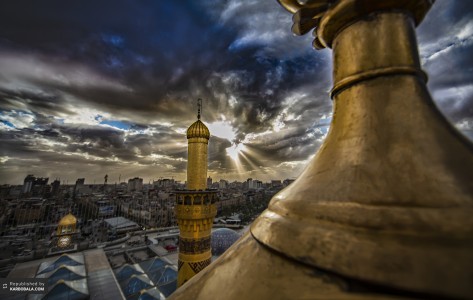Muslims who follow the Twelve Imams compose the largest group of Shia, existing in large numbers in Iran, Iraq, Saudi Arabia, Afghanistan, and Bahrain, with smaller numbers in many other Muslim-majority countries as well as minority communities in North America and Europe. They are referred to as Twelvers or Ithna-Ashariyya because of their belief in the Twelve Imams. Being one of the most important rituals, pilgrimage among the Twelvers need to be described.
Pilgrimage
Pilgrimage among the Twelvers is referred to the process of the visitation of graves predates Islam which has continued during and after the Prophet’s lifetime. Shia Muslims visit the gravesites, tombs, and mausoleums of religious figures, some of whom are saints and others who are important historically or politically. This is something Shias have done from the beginning, inspired by already existent Muslim practices but taking on a new importance with the establishment of Safavid Iran in the sixteenth century. In the Twelver tradition, holy cities include Mecca, Medina, and Jerusalem as well as Kufa, Karbala, Mashhad, Najaf, and other cities intimately connected to Shia history. Kufa, located in modern-day Iraq, is one of the holiest cities for Shia Muslims.
Imamzadeh
Imamzadeh refers to the large tombs in which the Imams are buried. A Persian word with numerous meanings, it is often translated as “the tomb of the descendant of an imam.”[1] Oleg Grabar, the great historian of Islamic art, understood it to mean “sons of an Imam.”[2] In Iran, which boasts numerous Shia sites, imamzadeh is often explained as “the place of the Imams.” Ziyarat gah mogaddas, a Persian phrase, often refers to the places where the relatives of the Imams are buried. Imamzadeh also can refer to the small shrines that can be found in Shia-majority countries like Iran and Iraq. These sites are found in large cities as well as small villages and commemorate everyone from regional saints to family members and fallen soldiers. Visiting these graves and religious sites is also a part of the pilgrimage among the Twelvers.
Last Word
Followers of this branch of Shi‘ism have distinct pilgrimage traditions, including the visitation of tombs where the Twelve Imams and their relatives are buried as well as other sites that are frequented by Jews, Christians, and other Muslims. The importance of the familial line on which all this rests is expressed in numerous traditions, such as the commemoration of the birth and death anniversaries of the Prophet’s relatives as well as the visitation of their tombs.
Reference
Pilgrimage in Islam – Traditional and Modern Practices by Sophia Rose Arjana
[1] Kalinock, “Touching a Sensitive Topic,” p. 670.
[2] Grabar, “The Earliest Islamic Commemorative Structures,” p. 7.
